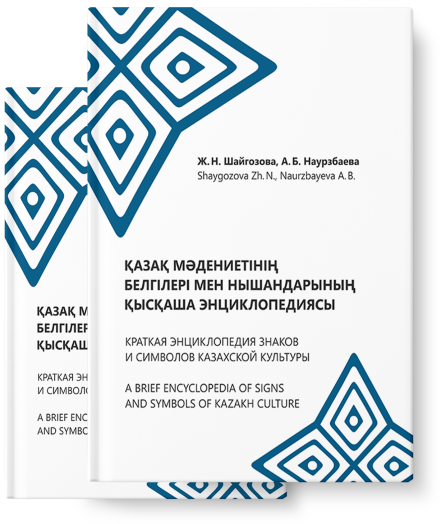
A short encyclopedia of
Signs and symbols of
Kazakh culture

The meaning of the word “sazsyrnai” is composed of: saz – sound and syrnai, “syr” means secret. For example, syrlasu means to share your innermost thoughts; syrlas means the closest friend to whom you can tell your secret. Usually “syrnai” is attached to another word related to the property of the construction or material: qamys syrnai (made of reed), muiiz syrnai (made of horn), saz-syrnai (made of clay) and many others.
The literal translation of the word “sazsyrnai” is “clay flute with a secret”. From the point of view of Turkic natural philosophy, sazsyrnai is a sacred material, namely clay. It was the first material used to represent deities, to make tableware and other utensils, to make primitive ornaments and to build the first dwellings built by humans. The awareness of the natural properties of clay is transferred to the human sensory world in the meaning of “softens”, “caresses the soul”. In Kazakh language “saz” means – motif, melody, music; “sazdy” – melodious, exciting; “saz” – intonation (sazyna keltirip oqu) – expressive reading [16, p. 123]. Sazsyrnai has a “transparent, light” timbre, it has a gentle and unusual sound. Performers can use it to “imitate” the blowing of a gentle wind in the steppe, the clattering of foal hooves, the splashing of water, and the soft rustling of grass. Relatives of the Sazsyrnay are the “üskirik” and the “tastauyq”, which were also made of clay. These imitation instruments were used to musically imitate bird calls and animal cries, and some of them could also express natural phenomena: the howling of snowstorms, storms, and winds.

